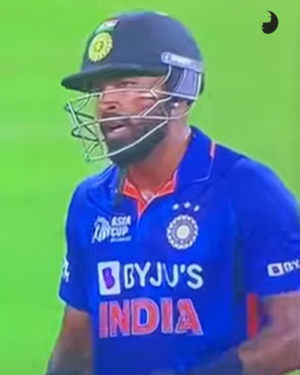Kung fu Pandya- A Body Language Analysis
Indian all-rounder Hardik Pandya has been making headlines lately for his performances on the cricket field. The 28-year-old has been a crucial player for the Indian team in recent matches, displaying his batting, bowling, and fielding skills with great aplomb. Pandya has been praised for his ability to finish matches, and his contributions have been key in several nail-biting victories for the Indian team. In this article, we will analyze Pandya’s body language during the India-Pakistan match in the Asia Cup 2022, and see how his nonverbal cues reflect his confidence, focus, and team spirit.
In a high-stakes match between arch-rivals India and Pakistan, Hardik Pandya stood out as one of the star players. Throughout the emotionally charged game, Pandya’s body language revealed a lot about his mindset and approach.
Let’s start with his bowling, this is after getting the wicket of Mohammad Rizwan, a key batsman. When Pandya took the crucial wicket of Mohammad Rizwan, it was a moment of triumph for the entire Indian team. But Pandya’s body language also showed his respect for his captain, as well as his own self-confidence and leadership skills. In a way, he is trying to stop Rohit from bowing down further as he is the captain of his team and thus can’t show submissiveness or less confidence. A celebration of not just the wicket but also of great team bonding. By bowing in response to Rohit Sharma’s gesture of appreciation, Pandya demonstrated both humility and a strong sense of team spirit.
People lose their cool over various reasons from minor to major. In the match we saw Pandya scolding Jadeja because there wasn’t much time left. He wanted to make sure they end with a win and for that he wanted Jadeja to give his best. A sign of getting the best of our team members even in a tense situation. Nonverbally this shows Hardik focussing on his team members performance along with his.
But Pandya’s body language also showed his respect for his captain, as well as his own self-confidence and leadership skills. In a way, he is trying to stop Rohit from bowing down further as he is the captain of his team and thus can’t show submissiveness or less confidence. A celebration of not just the wicket but also of great team bonding.By bowing in response to Rohit Sharma’s gesture of appreciation, Pandya demonstrated both humility and a strong sense of team spirit.
From a body language perspective, Hardik Pandya’s behaviour showed remarkable self-assurance and poise, even in the midst of a high-pressure situation. He clearly had a plan and took his time to get into the right mental and physical state to deliver the winning shot. This level of control over one’s body language can be observed in other successful athletes as well. For instance, Serena Williams’ pre-serve ritual and Cristiano Ronaldo’s goal celebration are all fine examples of how athletes can use body language to display confidence and maintain focus in crucial moments.
After the match, Pandya’s teammate Dinesh Karthik showed his appreciation for Pandya’s crucial contributions. This gesture of respect and camaraderie highlighted the strong bonds that unite the Indian cricket team and underscored the importance of nonverbal communication in building team cohesion.
In conclusion, body language is an essential aspect of sports, especially in high-pressure situations like the India-Pakistan match. Hardik Pandya’s body language throughout the game showed his confidence, focus on team performance and excellent bonding with his teammates. His interactions with both his own team members and opponents demonstrated the power of nonverbal communication in building relationships, expressing respect, and creating a positive atmosphere. By paying attention to body language, we can gain insights into a player’s mindset and emotions, which can ultimately impact their performance and the outcome of the game.



























